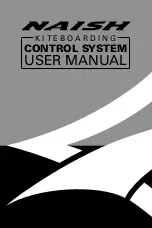Reviews:
No comments
Related manuals for JS-MD 1C 2017

Torque BTB 55
Brand: Naish Pages: 26

AS 13,5m FES
Brand: LZ design Pages: 24

Standard VC10
Brand: Just Flight Pages: 96

ELITE 020119
Brand: Topmodel CZ Pages: 15

Angel v1
Brand: Ozone Pages: 23

Viper 3
Brand: Ozone Pages: 24

SPEEDWING MKIV
Brand: Avid Technology Pages: 15

Windsos 16
Brand: WINDTECH Pages: 12

ZEPHYR L
Brand: WINDTECH Pages: 20

EVO 23
Brand: WINDTECH Pages: 28

Tonic 25
Brand: WINDTECH Pages: 24

FL-100-R
Brand: Aerospace Logic Pages: 23

WT9 Dynamic LSA Ciub S
Brand: Aerospool Pages: 70

WT9 Dynamic LSA / Club
Brand: Aerospool Pages: 204

















